Blog/Experiences
October Sky Spectacle: Meteors Clash with Comets – Oct 20-21
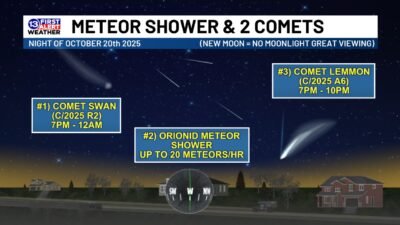
As we bid farewell to the twinkling summer fireflies, autumn ushers in its own celestial delight: the Orionid meteor shower, cresting to its radiant peak on the night of October 20-21. This cosmic cascade rains shooting stars across the night sky, courtesy of one of the solar system's most famous visitors—Comet Halley, whose dusty trail ignites in fiery streaks. More than a fleeting spectacle, these swift fireballs offer a mesmerizing reminder of the universe's endless motion. A new moon on October 21 keeps the heavens inky black and unobscured, promising stargazers up to 20 swift meteors per hour.
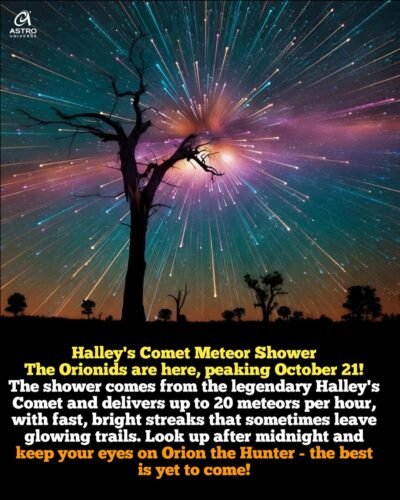
A Historic Sky Event: The Tales of Halley’s Comet
- 1066 – The Battle of Hastings and the Bayeux Tapestry: Halley’s Comet blazed across the English sky as an ominous celestial “star” just weeks before the Battle of Hastings. The comet is famously embroidered on the Bayeux Tapestry, showing terrified onlookers and foreshadowing the Norman invasion and the fate of King Harold.
- 1222 – A Conqueror's Sign? Halley’s Comet appeared again, inspiring Genghis Khan to turn his mighty hordes westward, altering the course of Eurasian history.
- 1301 – Giotto’s Nativity Star: The great Italian painter Giotto was inspired by Halley’s Comet to depict the Star of Bethlehem as a fiery comet in his famous fresco, blending art with the heavens in a way centuries ahead of his time.
- 1456 – Prayers Over Europe: As the Ottoman Empire threatened Europe, Halley’s Comet returned, sparking fear and prayers. Pope Callixtus III even called for special prayers, hoping to stave off disaster foretold by this blazing visitor.
- 1835 – Mark Twain’s Arrival: Born during Halley’s brilliant 1835 appearance, Mark Twain famously quipped he’d “go out with it.” Sure enough, he died in 1910 as Halley made its return, marking a cosmic bookend to the life of this renowned 19th-century American author and humorist.
- 1910 – Comet Panic: The 1910 passing ignited mass hysteria, with sensational newspapers hyping poison gases in the comet’s tail—prompting frantic gas mask sales and quack “comet pills” as unnecessary antidotes. A cosmic close call, Halley’s Comet, exposed our primal fears of the unknown.
- Global Witness: Millennia before telescopes, civilizations worldwide observed Halley’s Comet—Babylonians, Chinese astrologers, Indian sages, and North American petroglyph artists, all catching a glimpse of this or some other ancient sky traveler.
- Modern Encounters: In 1986, an international "Halley Armada" of spacecraft—including Europe's Giotto, the Soviet Vega probes, and Japan's Sakigake and Suisei—studied the comet up close, revealing its nucleus, composition, and tails. NASA's existing probes chipped in with tail and solar wind data for a fuller picture.
- Coming Soon: Halley’s Comet will return again in 2061, promising a dazzling show for new generations of stargazers.
The Fiery Offspring of a Legendary Comet
The Orionids get their name from the constellation Orion, the hunter, where the meteors appear to radiate from. But these aren't ordinary shooting stars. They're bits of cosmic dust and ice shed by Comet 1P/Halley, a periodic comet that swings by Earth every 76 years. Last visible in 1986, Halley won't return until 2061, but its legacy endures in two annual meteor showers: the Orionids in October and the Eta Aquariids in May.
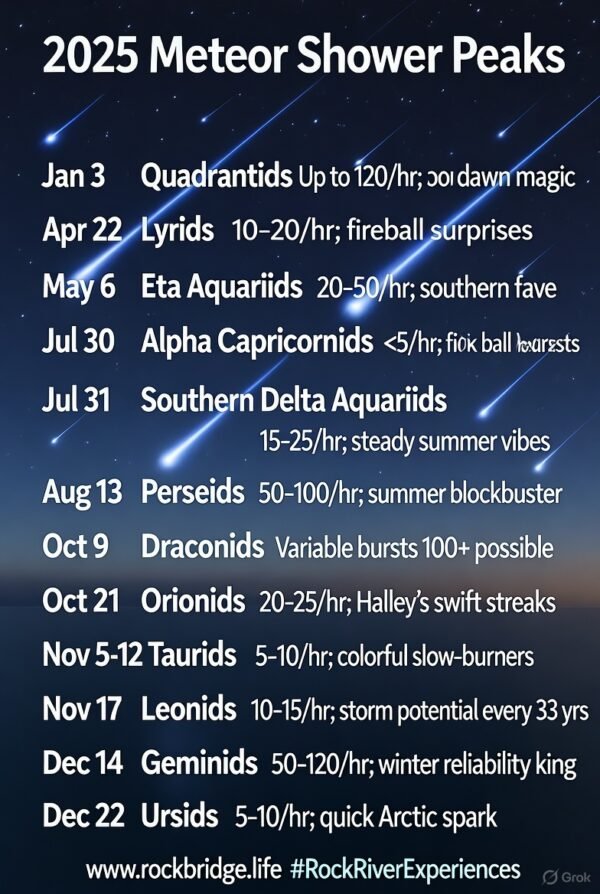
A Rare Comet Coincidence: SWAN and Lemmon
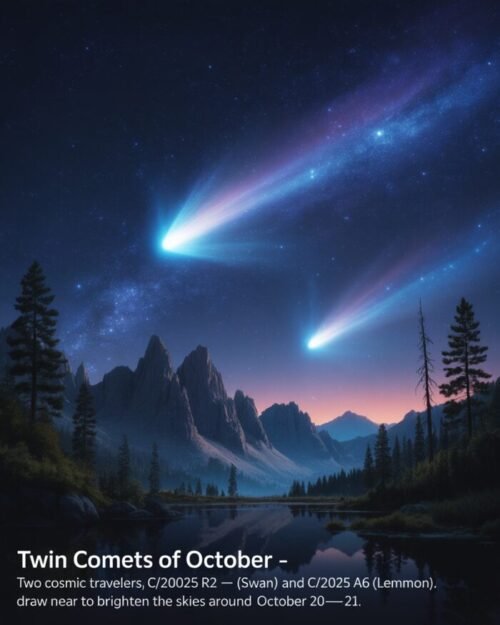
This October 2025, two bright comets—(SWAN) and (Lemmon)—light up the sky, creating a once-in-at-least-couple-decades cosmic show. Actually, we might even have a third comet joining the party! Ashbrook-Jackson, may appear in late October—you see, predicting comets is a challenging science. If that happens and we score a triple comet convergence, it could be decades (or centuries) before it repeats, unless… the universe throws us a curveball sooner. Science is hard, knowledge increases, comets can be unpredictable, and their orbits don’t always stick to the script!
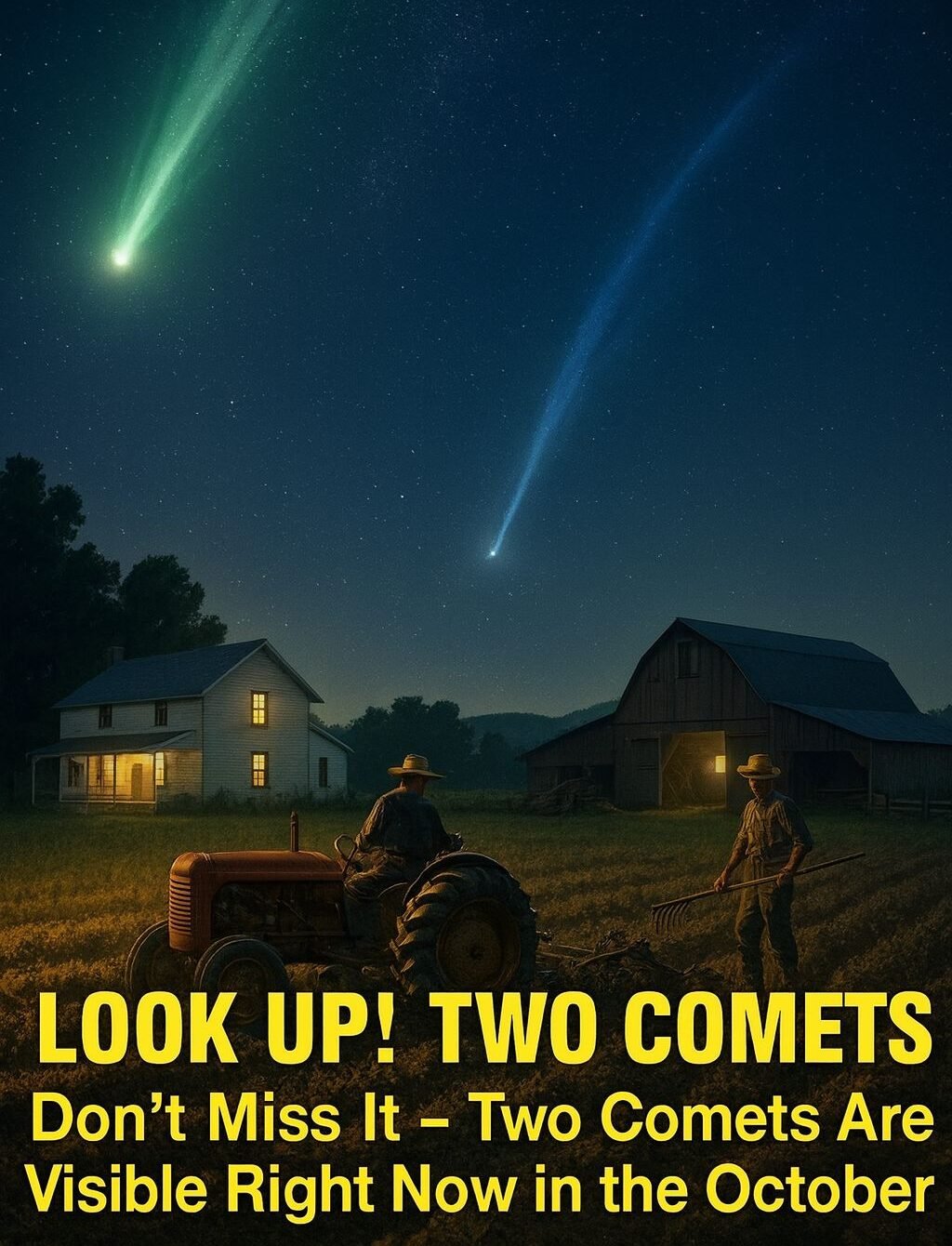
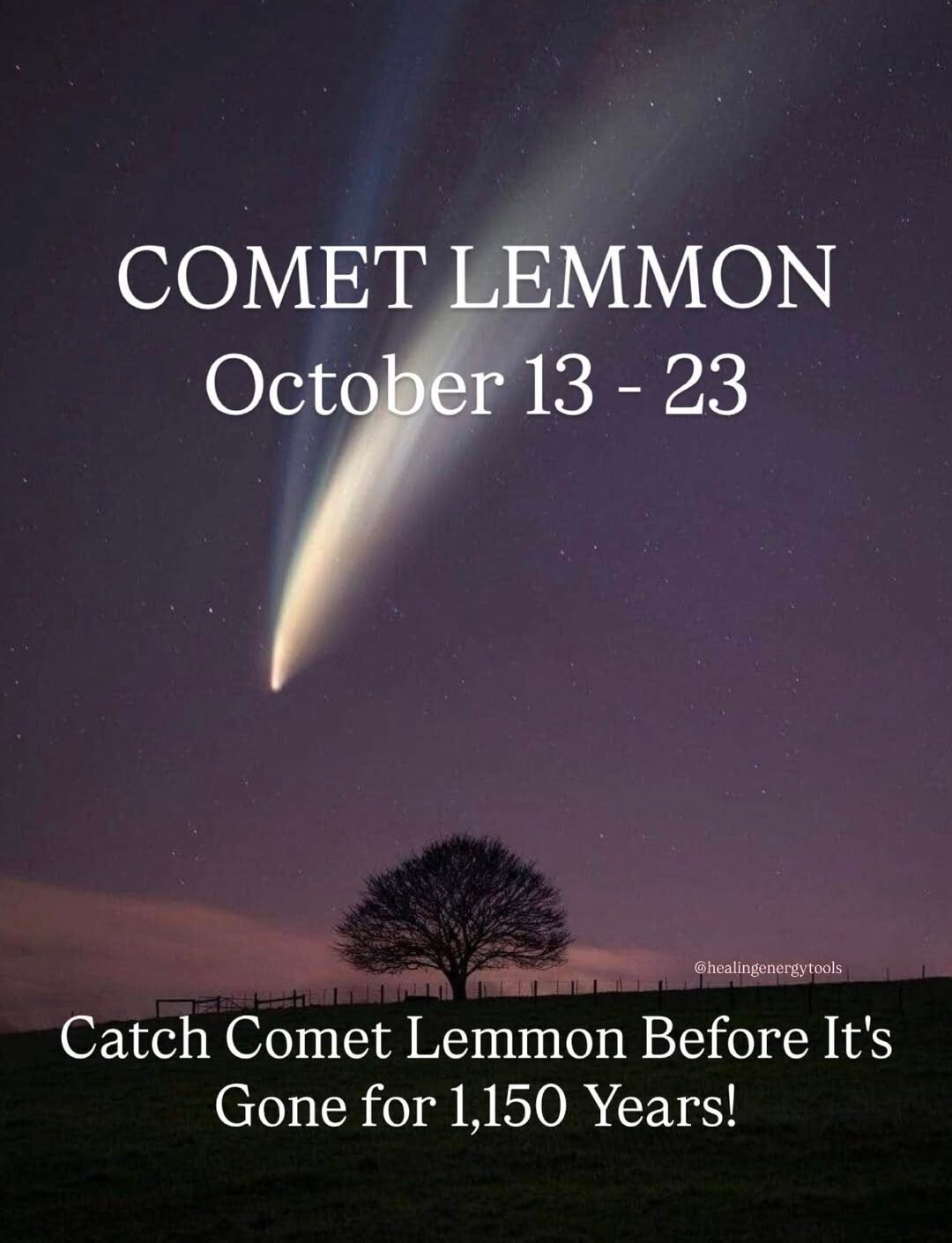
- Comet SWAN: Appearing closest to Earth around October 20-21 and glowing low in the southwestern sky just after sunset at about magnitude 6.0, it may be visible through binoculars, and possibly tease the naked eye under pristine dark skies. It’s a long-period visitor that won’t return for about 650 to 700 years.
- Comet Lemmon: Brightening rapidly and potentially visible with the naked eye by late October, it will be positioned low near the northeastern horizon in the predawn sky (shifting toward evening views later in the month). Its orbital trip around the sun takes about 1,300 years, so catching it now is a real cosmic jackpot.
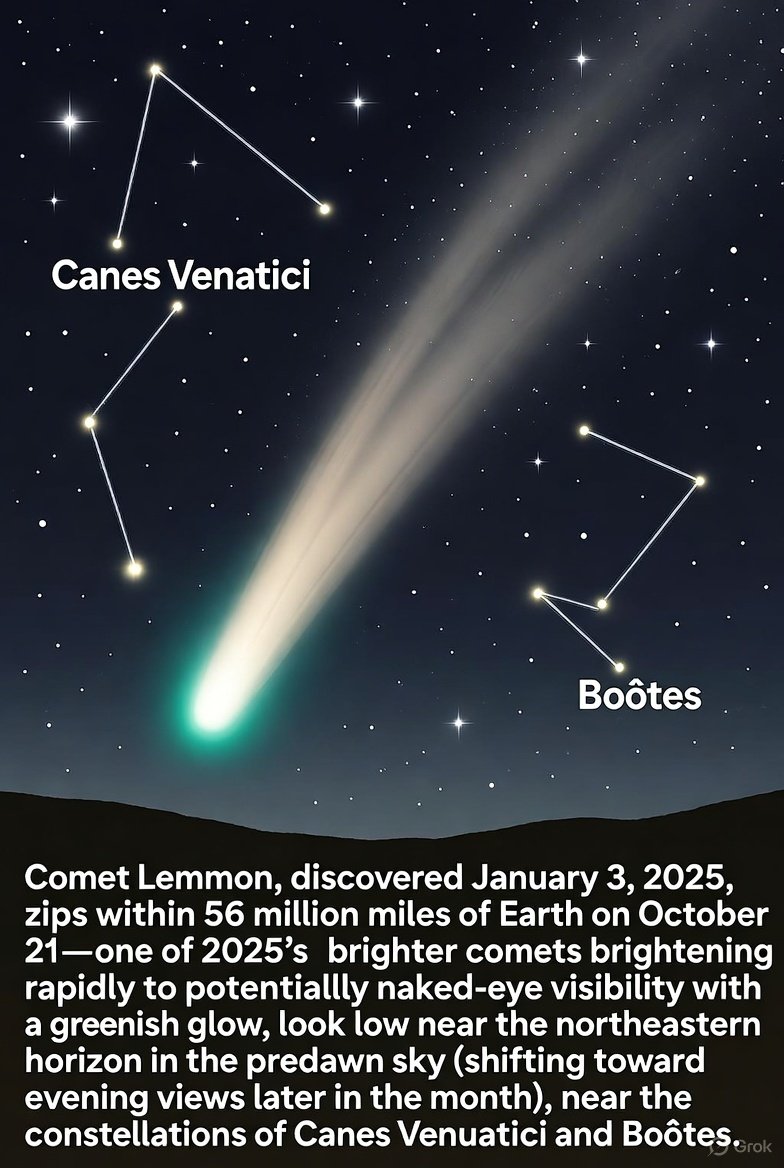
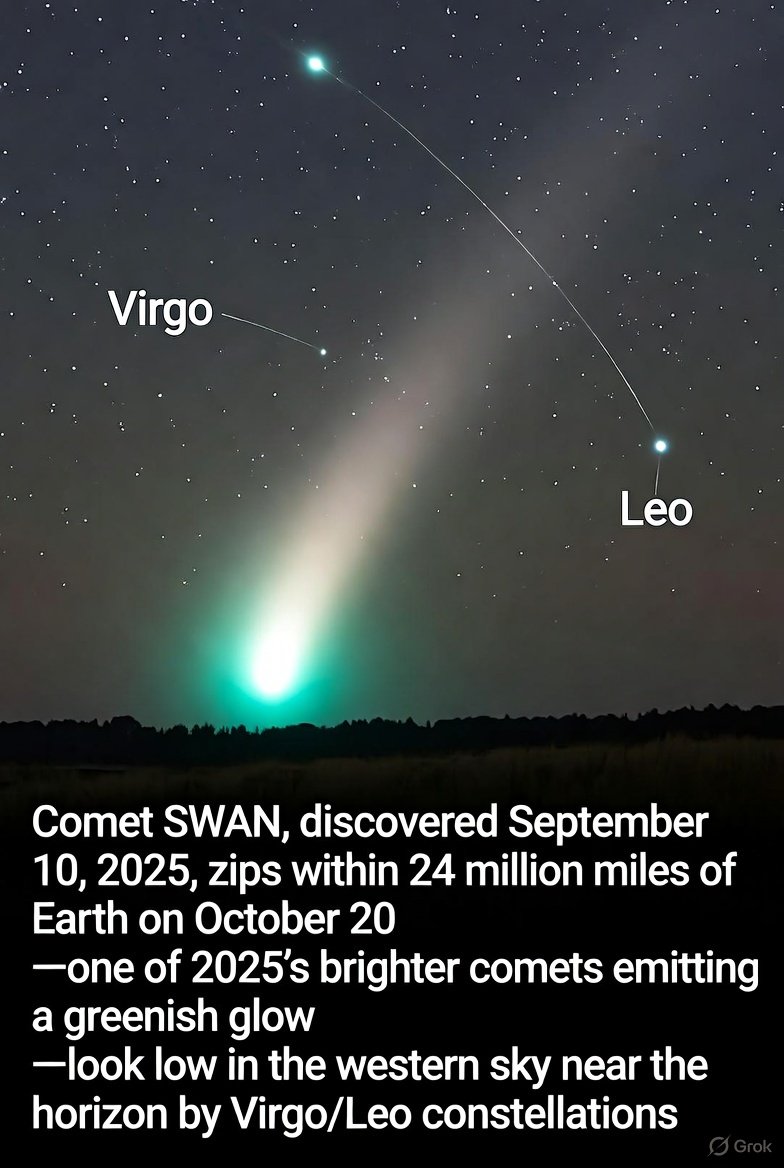
Other Upcoming Comets
Later in 2025 and early 2026, other comets will be visible mostly with binoculars or telescopes. Here's a quick rundown:
- Schaumasse: Expected to reach peak brightness in January 2026 near perihelion (closest to the sun) on January 8, visible high in Virgo during early morning hours; this periodic comet orbits the Sun every 8.2 years.
- Christensen: Should brighten for viewing with binoculars in December 2025, low in the pre-dawn eastern sky near perihelion; it has a roughly 6.5-year orbital period.
- Ashbrook-Jackson: Might make its appearance in late October, rising in the evening sky in Aquarius—though at around magnitude 15, it will be faint (nothing is guaranteed with comets); it's a periodic visitor with a roughly 7.3-year orbit.
Chasing the Elusive: A Fleeting Cosmic Gift
In the vast theater of the night sky, comets like Halley embody rarity itself—visiting every 76 years (give or take). These elusive icy travelers, often mistaken as cosmic harbingers, don’t always signal doom or change—but their rare appearances, with orbits spanning centuries or millennia, are a striking reminder that our universe is wildly unpredictable and endlessly wondrous.
Yet, while the flash of a single meteor is fleeting, meteor showers themselves peak quite reliably—about a dozen times each year according to most sources. These showers return like cosmic clockwork, their peak nights drifting by only a day or two annually.
This year’s October 20-21 convergence—Halley’s fiery echoes raining down amid the hazy glows of SWAN and Lemmon—is a serendipitous jackpot, a rare fusion of the steadfast and the strange. Bundle up, bring a friend, find a dark horizon, and let these celestial messengers pull you into the stars’ eternal story. Who knows when the next act will unfold?












